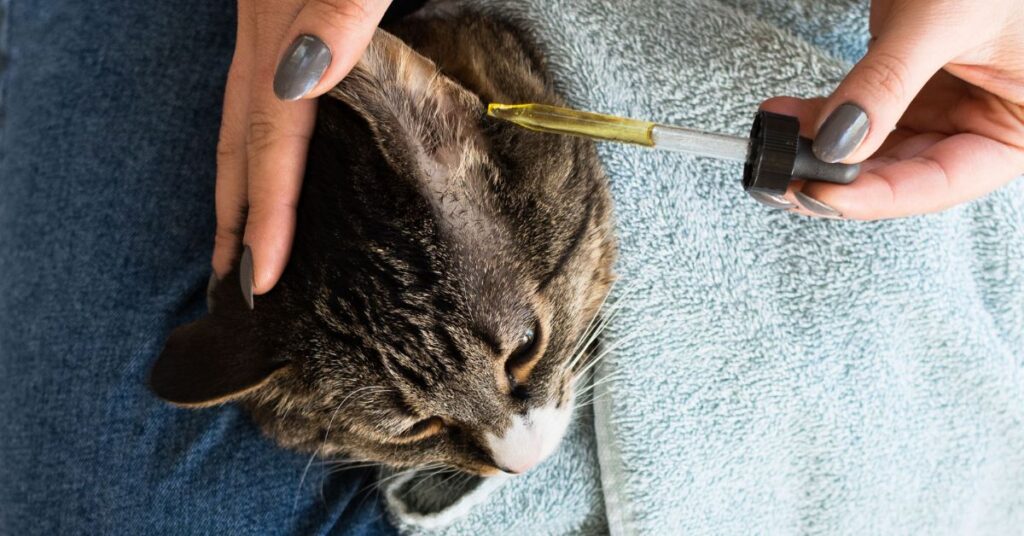Why Are Cats So Soft?-A Complete Guide
If you’ve at any point stroked a Cat, you know exactly how extravagant their jackets can feel. Be that as it may, have you ever asked why Cats are so soft?
Factors like hair construction, thickness, and prepping habits impact the surface of cat fur. The kinds of hair follicles and the presence of an undercoat add to its non-abrasiveness.
This article will investigate the science, genetics, and evolutionary advantages that contribute to our cat friends’ velvety texture.
The Anatomy of Cat Fur:
To comprehend why Cats are so soft, it’s useful to begin with the fundamentals of their fur. Cat fur comprises three kinds of hair: monitor hairs, awn hairs, and down hairs.
- Watch Hairs are the longest and coarsest hairs that structure the external layer of a Cat’s jacket. They create a barrier that protects against environmental elements.
- Awn Hairs: Somewhat more limited and better than watch hairs, awn hairs help protect and add to the thickness of the coat.
- Down Hairs are the gentlest and most limited hairs, lying nearest to the skin. The insulation provided by down hairs significantly enhances a cat’s overall softness. The one-of-a-kind blend of these hair types gives Cats their particularly soft and rich feel.
Breeding and genetics:
1. Fur Construction:
Cats have two sorts of hair: watch hairs and undercoat. The undercoat’s texture and density determine a cat’s softness. Breeds with a thicker, better undercoat will quite often feel milder to the touch.
2. Factors of nature:

Its hereditary cosmetics do not entirely settle a Cat’s surface and length. Breeds specifically reared for their extravagant covers frequently display milder fur. Variations in fur texture can also be caused by genetic mutations, such as the presence of record genes that cause the coat to be curly or wavy.
3. Habits of Grooming:
A Cat’s prepping propensities assume a part in keeping up with the delicateness of its fur. Dead hair is removed during regular grooming, and natural oils are spread throughout the coat to keep it soft and silky.
4. Ecological Elements:
Environmental factors like diet, hydration, and sunlight exposure can affect the Health and appearance of a cat’s fur. A decent eating routine rich in fundamental supplements advances sound skin and coat, adding to non-abrasiveness.
5. Breed Attributes:
The exceptionally soft fur of some cat breeds is well-known. Breeds like the Persian, Rag doll, and Maine Coon are known for their extravagant, rich coats, which have been specifically reproduced for non-abrasiveness and thickness overages.
Also Read: Can Dogs Eat Zucchini?-A Complete Guide
Habits of Grooming:
1. Brushing:
Brushing the coat regularly aids in the distribution of natural oils, prevents matting, and removes loose hair. The recurrence of brushing depends upon the length and kind of fur, with long-haired Cats requiring more successive preparation than short-haired varieties.
2. Trimming Nails:
Regularly trimming your Cat’s nails can prevent overgrowth, ingrown nails, and scratches. Use nail clippers designed specifically for pets and do not cut into the quick, pinkish area with nerves and blood vessels.
3. Ear Cleaning:

Inspect your Cat’s ears frequently for signs of infection, wax buildup, or dirt. Avoiding the ear canal, gently clean the outer ear with a damp cotton ball or pad. Discuss any unusual findings with your veterinarian.
4. Dental Consideration:
Dental cleanliness is fundamental for forestalling dental sickness in Cats. Clean your Cat’s teeth consistently with a pet-safe toothbrush and toothpaste. Furthermore, dental treats or toys should be given to advance oral Health.
5. Eye Care:
Keep your Cat’s eyes spotless and liberated from release by delicately cleaning them with clammy fabric. If you notice unreasonable tearing, redness, or other indications of eye issues, seek veterinary consideration quickly.
6. Bathing:
Most cats can groom themselves well and rarely require baths. However, you may need to bathe your Cat with a mild cat shampoo if it gets into something sticky or dirty. Avoid getting water in its ears, and always use lukewarm water.
7. Insect and Parasite Control:
Use bug-avoidance items your veterinarian prescribes to shield your Cat from insects, ticks, and parasites. Consistently examine your Cat’s fur for indications of insects or bug soil.
8. Health Checking:
During grooming, you can check on your Cat’s overall Health. Look for changes in the appearance of the skin or coat, lumps or bumps, and indications of discomfort. Contact your veterinarian if you have any concerns.
Also Read: Why Does My Cat Stare At Me Spiritual?-Complete Guide
Health and Nourishment:
1. Adjusted Diet:
A diet tailored to your Cat’s life stage (kitten, adult, senior) and specific requirements should be provided. It should be well-balanced and contain all necessary nutrients. Search for top-notch business cat food that fulfils the health guidelines established by associations like the Relationship of American Feed Control Authorities (AAFCO).
2. Protein:
Because they are obligate carnivores, cats need to eat much high-quality animal protein. To meet their protein needs, pick cat food sources with meat or fish as the essential fixing.
3. Water:

Make sure that your Cat always has access to clean water. Legitimate hydration is fundamental for maintaining kidney health and, generally speaking, prosperity.
4. Segment Control:
Control your portion sizes to avoid over- or underfeeding. Depending on your Cat’s age, weight, and activity level, follow the feeding instructions provided by the cat food manufacturer.
5. Standard Veterinary Check-ups:
Plan standard veterinary check-ups to screen your Cat’s well-being early and address any expected issues. Your veterinarian can also discuss nutrition, vaccination schedules, parasite control, and preventive care.
6. Controlling your weight:
To avoid health issues linked to obesity, keep your Cat at a healthy weight. Screen your Cat’s body condition score and change its eating and exercise routine depending on the situation to achieve and maintain optimal weight.
7. Dental Health:
Dental cleanliness is significant for forestalling dental sickness in Cats. Provide dental treats or toys designed to promote oral Health, and brush your Cat’s teeth regularly with a toothbrush and toothpaste designed specifically for pets.
8. Natural Improvement:
Interactive play, scratching posts, climbing surfaces, and puzzle toys can keep your Cat’s mind and body active. Enhancing your Cat’s surroundings aids in preventing boredom and encouraging natural behaviour.
9. Parasite Control:
Follow your veterinarian’s suggestions for parasite avoidance items to safeguard you from insects, ticks, heart worms, and gastrointestinal parasites.
10. Stress The executives:
Limit stressors in your Cat’s current circumstance and give them a protected, agreeable space where they can withdraw if necessary. Tending to pressure can assist with forestalling behaviour issues and supporting general well-being.
Also Read: Can Dogs Have Corn?-A Complete Guide
FAQ’s:
1. Why are Cats so soft?
Cats can turn their flexible spines more than numerous creatures and curve their bodies to a much more noteworthy degree.
2. Are dogs or cats more gentle?
Usually, dogs are more cuddly, but their fur isn’t always as soft. A few canines’ hair is more wiry or scratchy, and some is delicate and soft.
3. Will Cats feel through their fur?
Contact receptors are additionally present on their noses and paws. A Cat’s fur itself adds to an increased feeling of touch as it continuously receives tactile data.
4. Is a Cat lazier than a canine?
Cats are lazier than canines. They can rest for an incredible 16 hours in a day. Cats’ future is generally 15-25 years, while canines’ future is 7-20 years.
Conclusion:
Cats’ unique fur structure and genetics, grooming routines, and diet contribute to their softness. Ecological elements and transformative benefits likewise play a part in keeping up with the extravagant surface of their jackets.
The non-abrasiveness of a Cat’s fur not only adds to their Health and prosperity but additionally fortifies the profound connection between people and their catlike companions. Therefore, the next time you stroke your Cat, take a moment to appreciate the intricate and wonderful aspects that contribute to their incredibly pliable nature.






